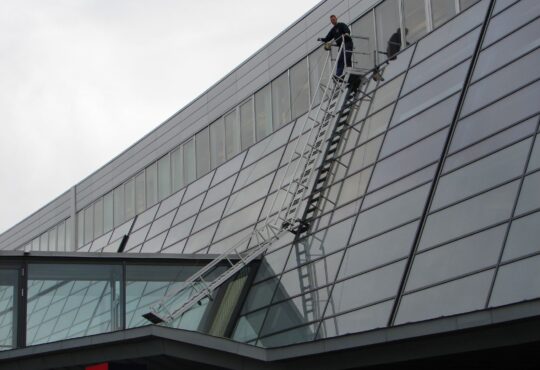
Crafting Dynamic Learning Environments: Unlocking the Path to Academic Excellence
In the ever-evolving landscape of education, creating dynamic learning environments has become an imperative for fostering academic excellence. Gone are the days of passive learning where students simply absorb information without actively engaging with it. Instead, educators are increasingly recognizing the value of crafting environments that promote active engagement, personalized learning experiences, and a supportive learning community. In this article, we will delve into these key elements and explore strategies that can unlock the path to academic excellence.
Main Point 1: Fostering Active Engagement
Active engagement lies at the heart of a dynamic learning environment. When students are actively involved in the learning process, they develop a deeper understanding of concepts and retain information more effectively. To foster active engagement, educators can employ various strategies.
Firstly, incorporating hands-on activities can transform the learning experience. By providing opportunities for students to manipulate objects, conduct experiments, or solve real-world problems, educators can stimulate their curiosity and make learning tangible.
Furthermore, encouraging student collaboration can enhance engagement. Group projects, discussions, and peer-to-peer learning allow students to exchange ideas, challenge one another’s thinking, and develop essential communication and teamwork skills.
Moreover, providing opportunities for student-led discussions empowers learners to take ownership of their education. By facilitating open-ended conversations, educators can encourage critical thinking, promote active participation, and create an inclusive learning environment where every voice is valued.
Lastly, leveraging technology can amplify engagement. Interactive online platforms, educational apps, and multimedia resources can make learning more interactive, engaging, and tailored to individual student needs.
Main Point 2: Personalizing Learning Experiences
Personalized learning acknowledges that each student is unique, with their own strengths, interests, and preferred learning styles. By tailoring instruction to meet individual needs, educators can cultivate a more meaningful and effective learning experience.
Formative assessments play a crucial role in personalizing learning experiences. By regularly assessing student understanding throughout the learning process, educators can identify knowledge gaps, provide timely feedback, and adjust instruction accordingly.
Differentiating instruction is another key strategy. By varying the content, process, and product of learning, educators can meet students at their individual readiness levels and learning styles. This approach helps to challenge advanced learners, provide additional support to struggling students, and ensure that all learners are appropriately engaged.
Moreover, allowing for student choice and autonomy fosters a sense of ownership and motivation. By offering options for projects, topics, or learning pathways, educators can tap into students’ interests and empower them to pursue their passions within the curriculum.
Additionally, adaptive learning technologies, such as intelligent tutoring systems and personalized learning platforms, can provide students with tailored content and adaptive feedback, ensuring that they receive targeted support and guidance.
Main Point 3: Cultivating a Supportive Learning Community
A supportive learning community plays a vital role in nurturing academic excellence. When students feel safe, valued, and connected, they are more likely to take risks, engage in meaningful learning experiences, and thrive academically.
Establishing clear expectations and norms is the foundation of a supportive learning community. When students understand what is expected of them behaviorally and academically, they feel secure and are more likely to actively participate in the learning process.
Encouraging peer support and collaboration is another key aspect. By creating opportunities for students to work together, learn from one another, and celebrate each other’s achievements, educators foster a sense of belonging and cooperation.
Furthermore, meaningful student-teacher relationships can have a profound impact on academic success. By demonstrating care, respect, and genuine interest in their students’ well-being and learning, educators build trust and create an environment where students feel comfortable seeking help and guidance.
Promoting inclusivity and diversity is essential in a supportive learning community. By celebrating and respecting differences in race, culture, gender, and abilities, educators help students develop empathy, appreciation for diverse perspectives, and an understanding of the world around them.
Takeaway
Crafting dynamic learning environments is the key to unlocking the path to academic excellence. By fostering active engagement, personalizing learning experiences, and cultivating a supportive learning community, educators can create a transformative educational experience for their students.
By incorporating hands-on activities, promoting collaboration, encouraging student-led discussions, and leveraging technology, educators can maximize student engagement and facilitate deep learning. Similarly, through formative assessments, differentiated instruction, student choice, and adaptive learning technologies, personalized learning experiences can be crafted to meet the unique needs of each learner.
Moreover, by establishing clear expectations, fostering peer support, nurturing meaningful student-teacher relationships, and promoting inclusivity and diversity, educators create a supportive learning community that empowers students to reach their full potential.
As we embark on this journey of crafting dynamic learning environments, let us remember that academic excellence is not solely measured by test scores but by the growth, curiosity, and joy of learning instilled in students. Let us embrace these strategies and unlock the limitless possibilities that lie within our educational spaces. Together, we can shape the future of education and pave the way for academic excellence.









